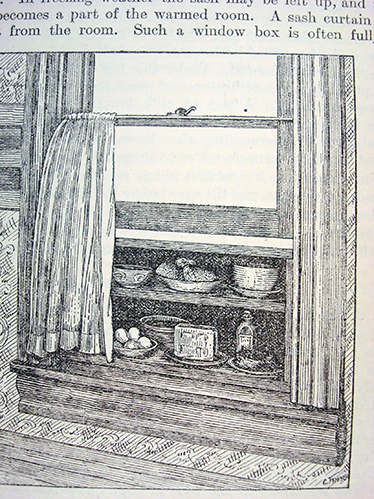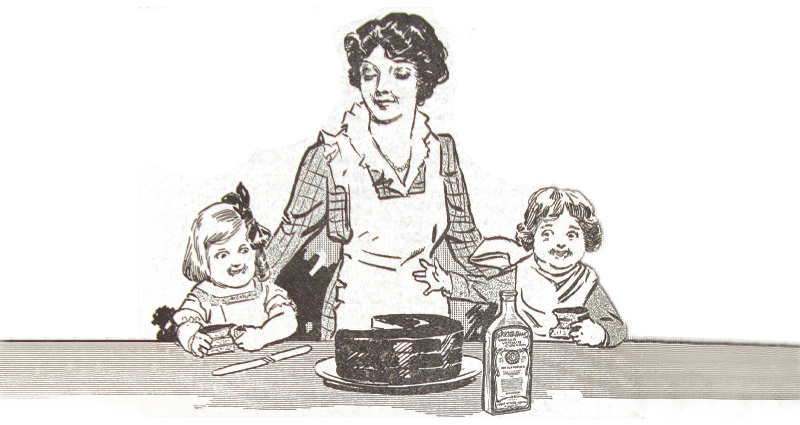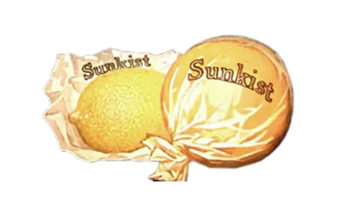1916 USDA booklet, Care of Food in the Home [reddit] by Mrs. Mary Hinman Abel was written in a time without electricity, when homemakers relied on an ice box, plucking chicken, and daily milk delivery. Mrs. Abel gave directions for keeping food cold in the days before refrigeration, including the following outside winter window box (picture) particularly helpful for urban dwellers who didn’t have root cellars.
“Storage of food in cold weather is a comparatively simple matter, since the low temperature is furnished by nature and we have only to guard against freezing…. It is of great convenience to have the ice chest built against the outer wall of kitchen or pantry, so that it may be filled from the outside by means of a small door cut for that purpose. In such case it is of course advisable to choose a wall on which there is little or no sunshine. The ice box may also be drained by a pipe leading to the outside.”

Highlights in the booklet
- Succulent fruits, milk, and meats are especially subject to bacterial action, they must be given unusual attention.
- There was an old fashioned method of leavening called “milk-rising” or “salt-rising” when the dough was left open, and they depended on wild yeast falling into the dough [bacteria could also fall into the dough which caused sour or bitter bread] [Caked] yeast grows best at 70-90 degrees F, so must be cooled to well-below that.
- Fish that has been kept for a week or more on ice has lost its distinctive flavor, although it may not be spoiled. It has what the cook calls a “woolly” taste.
- Only those who have been accustomed to eating green vegetables fresh from the garden realize in what poor condition are many of the vegetables sold to the city buyer. Some varieties, as green peas, are so delicate in flavor that even a few hours’ removal from the vines brings about a change.
- In earlier times a larger proportion of the food supply was stored at home than is now the case. Even in cities and towns supplies were commonly purchased in bulk. Owning to the improvement in transportation facilities and to other changed conditions storage of food outside the home has developed into an enormous industry.
- Foods that have been frozen and then thawed seem to furnish particularly good ground for bacterial growth, or what we call “spoiling.”
- …much of the cold-storage goods, such as apples and other fruit, is of excellent quality.
- The storeroom for food may be the tiny closet of the flat dweller in a city or the cellar of the village or farm house….The dweller in a small apartment who has no cool cellar in which to store perishable articles may find an outside window box useful in winter (see above picture).
- The writer once saw in Holland a cellar that met every possible requirement of hygiene. The floor and side walls were of closely matched tiles laid in cement, making it as tight as a dish and as easily cleaned. It was not large, but its wall space was so used that it furnished ample storage facilities for a large restaurant.
- The storage of food in cold weather is a comparatively simple matter… the keeping of perishable foods in warm weather is best accomplished by artificially cooled air.
- While cooling, newly baked bread should be lightly covered with a clean cloth or paper to prevent mold germs and dust from falling upon it, but should not be tightly wrapped in a thick cloth as is the practice in some households, for unless it is aired when taken from the oven, it is likely to become soggy and damp and thus offers an excellent medium for cultivation of molds.


